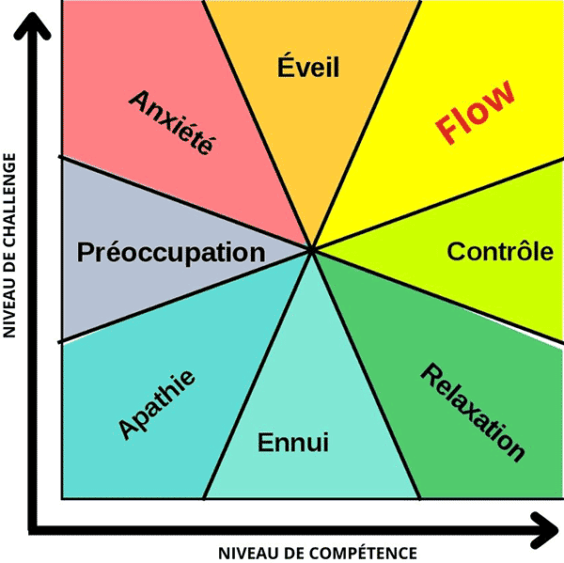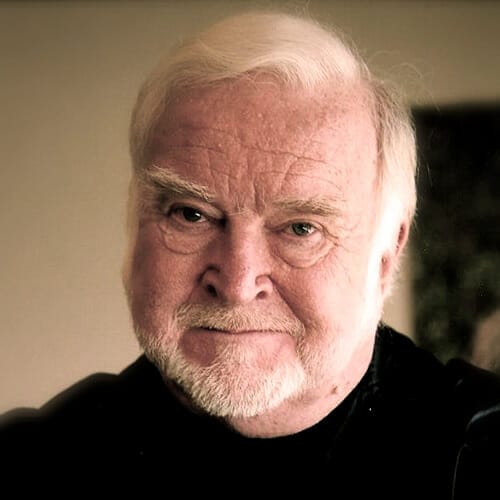Identified by one of the founding fathers of positive psychology, “flow” designates a state of optimal experience, in which the individual is completely absorbed in an activity. When we enter a state of flow, we are immersed in our world and we no longer see the time passing. It is a moment of grace and full potential that we encounter in sport, in music, in art and even… at work!
When we enter a state of flow, we are immersed in its world and we no longer see the time passing. The concentration is maximum and the level of pleasure in carrying out its task is also at the top.
The state of optimal experience
This optimal functioning state of the mind is what the psychologist Mihály Csikszentmihályiat the origin of positive psychology alongside Martin Seligman, baptized “the flow”.
It is the state of consciousness in which an individual finds himself strongly committed to an activity for the interest it represents for himself. We are engaged because the activity captivates us as such, and not to achieve a specific objective. It is the activity itself which becomes the finality.

The state of flow requires concentration and effort. So there is certainly a notion of personal challenge, but it is confined to the extent of the individual’s abilities. Thus, with the necessary efforts, we are able to carry out the mission, and this in any field, according to the interests and skills of each (eg playing an instrument, playing a part of chess, writing, singing, playing a video game, making an object, painting, practicing a sport, etc.).
In a state of flow, the brain releases hormones (dopamine, serotonin and endorphins), which generate a greater capacity for retention, information processing and adaptation, a increased motivation and… creativity. It also allows other areas of the brain to interact, giving free rein to our ability to create and innovate. The flow thus has a clear influence on fulfillment, self-confidence and performance.
A decrease in activity in the prefrontal cortex has even been identified, probably linked to the loss of .
The 6 factors of the state of flow
In a state of flow, you perceive a balance between your personal skills and the challenge to be met. We forget our ego (no more self-awareness) and, as we are immersed in the present moment, the notion of time no longer applies. This results in indicators
So how do you get into flow and stay there? It is difficult to make the decision to live a flow experience because it is a state reached without conscious effortbut the activity must be pleasant and rewarding, just by the interest it represents for you.
Rather, it is about finding oneself in a situation and a state of mind, characterized by indicators such as:
- The commitment : we are involved in our task because we give it importance and value.
- Mastery : we are comfortable but the task in question remains sufficiently stimulating to represent a challenge. If it is too simple, we quickly switch to the easy way which tends to demotivate us. The execution of the task then becomes automatic. Conversely, the objective and the difficulty must not be out of reach either, otherwise you will “exit” the state of flow.
- Concentration : we must not be interrupted while we practice the activity to remain fully in a state of immersion.
- Positive emotions : in a state of flow, we only perceive well-being, pleasure and even pride. There is no feeling of stress, anxiety and boredom.
- The loss of time markers : we are focused on the present moment and completely cut off from the rest of the world. You can stay there for hours and forget even your basic physiological needs such as thirst, hunger, fatigue or “urgent cravings”.
- The level of satisfaction : the activity must give us feelings about the quality of performance, because we must be able to rectify the situation ourselves if we notice a result below our level of personal requirement.
Flow in practice…
So how do you put it into practice?
- We start by setting clear goalsambitious but achievable.
- We concentrate and, for that, we cuts out sources of distraction like phone or notifications.
- We do confidence in their skills and we try to improve them continuously.
- We try to self-assess our performance to stay the course and have the feeling of progress.
The state of flow is so pleasant that it nourishes motivation. The activities that give us these moments out of time are so pleasant that we practice them with seriousness and assiduity, which further improves our skill level. It’s the perfect virtuous circle!

Then it is important toanalyze moments of flow, and identify the red thread that connects them. What stimulates and motivates us in these activities?
You have to be as specific as possible because that’s the key to determining your drivers, that is, those elements to the source of the energy that stimulates us and makes us vibrate.
The better we know our driving forces, the more we are able to make personal and professional choices in harmony with ourselves. Once they are identified, we can better target environments or working conditions that really suit us.

















